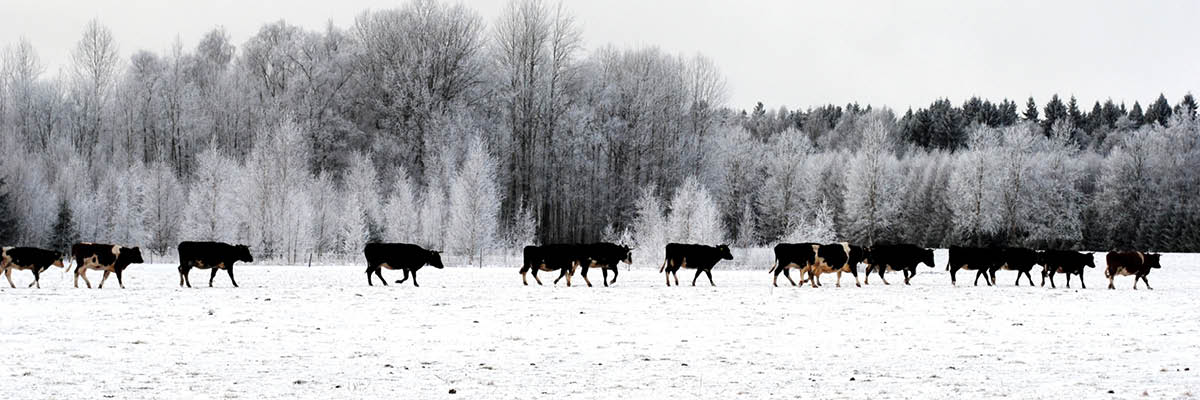Winter is just around the corner
Will you cattle be warm and dry? Generally our customers tell us they are “at least $100 - $125 per head per turn to the good” compared to feeding cattle in an outdoor open lot.
Some point to the cooling effect of keeping the cattle protected from the hot summer sun and the great ventilation they associate with the airflow created in their Summit Livestock Facilities monoslope beef barns.
Others tell us they really notice a big cattle performance difference in winter. They say that keeping the cattle out of the rain (always dry) and in the warmth of the lower winter sun keeps cattle gaining weight even in the harshest winter weather.
Of course both may be right. Here’s an informative article that may allow you to quantify how keeping cattle warm and dry puts more money in the producers’ pocket.
According to an article by Tracy Turner of Ag Answers, an Ohio State and Purdue Extension Partnership, the key to understanding and quantifying this lies in our knowledge of the thermo neutral zone of beef cattle.
In the article Rory Lewandowski, OSU Extension Agriculture and Natural Resources Educator, explains,
“Animals have a thermo neutral zone - a temperature range in which the animal is most comfortable not under any temperature stress.”
This zone is the optimum temperature for body maintenance health and animal performance.
Lewandowski says,
“The LCT for beef cattle is 59 degrees during summer or when wet 45 degrees in the fall 32 degrees in winter and 18 degrees in heavy winter.”
But when livestock experience cold stress below the lower boundary of that zone they reach lower critical temperature (LCT) and the animal’s metabolism must increase in order for it to keep warm Lewandowski said,
“Generally energy intake must increase by 1 percent for each degree of cold below the LCT.”
And Lewandowski also points out. . . the hair coats [of cattle] lose their insulation ability when wet.
What is the effect of a winter rain on cattle in an outdoor lot?
Therefore wet cattle in an outdoor lot at 20 degrees must consume 12% (32 – 20 = 12) more energy just to maintain their weight.
Lewandowski says,
“Producers should keep in mind that LCT is influenced by an animal’s size age breed nutrition housing conditions and hair coat or wool thickness. The thicker the hair coat or wool the more the LCT decreases.”
To find out more about what Summit Livestock Facilities customers say about cattle performance visit our video testimonials page and see what Brent Lorimor and David Rydberg say about cattle performance in a Summit Livestock Facilities monoslope beef barn.
For more information on cold stress and the entire article click here.
Do you have more questions that are not covered in this article? If you need help designing and planning, please contact Summit Livestock Facilities at 800.213.0567 or click here to email us. If you are ready to get a price, click here to request a quote and a member of our customer engagement team will help you determine the next steps of your project.


